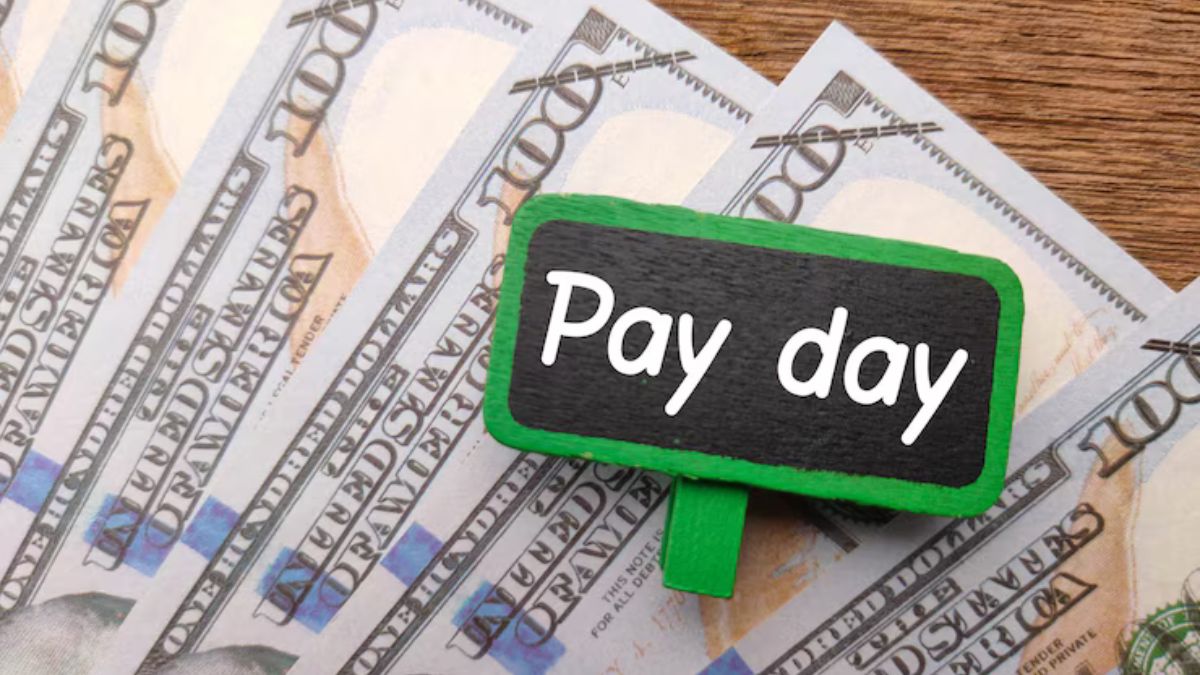FINANCE
Weighing the Advantages and Disadvantages of Payday Loans

Payday loans are a popular option for those in need of quick cash to cover unexpected expenses. These short-term, high-interest loans promise immediate financial relief, but they come with significant trade-offs. Before deciding to contact a payday loan lender, it’s crucial to weigh the advantages and disadvantages to determine if this type of loan is the right solution for your financial situation.
Advantages of Payday Loans
- Quick Access to Funds: One of the primary benefits of payday loans is the speed at which you can receive the funds. Unlike traditional loans, which can take days or even weeks to process, payday loans can often be approved and disbursed within a few hours. This makes them an attractive option for emergencies such as medical bills, car repairs, or urgent home expenses.
- Minimal Requirements: Payday loans typically have fewer requirements compared to other types of loans. Most lenders only require proof of income, a valid ID, and a bank account. This accessibility makes payday loans available to individuals who may not qualify for traditional loans due to poor credit or lack of collateral.
- No Credit Check: Many payday lenders do not perform credit checks, making it possible for individuals with bad credit or no credit history to obtain a loan. This can be beneficial for those who need funds quickly and cannot wait for a traditional loan approval process.
- Convenient Application Process: The application process for payday loans is often straightforward and can be completed online or in person. This convenience allows borrowers to apply for a loan at any time, without the need to visit a bank or credit union during business hours.
Disadvantages of Payday Loans
- High Interest Rates and Fees: Payday loans are notorious for their high interest rates and fees. The annual percentage rate (APR) on payday loans can exceed 400%, making them an expensive borrowing option. For example, borrowing $500 for two weeks might cost $75 in fees, which translates to an APR of nearly 400%. These high costs can quickly add up, especially if the loan is rolled over or renewed.
- Short Repayment Terms: Payday loans are designed to be short-term solutions, with repayment typically due within two to four weeks. This short timeframe can make it difficult for borrowers to repay the loan in full by the due date, leading to additional fees and interest charges.
- Limited Borrowing Amounts: Payday loans generally offer smaller loan amounts compared to traditional loans. While this can be sufficient for minor emergencies, it may not be enough to cover more significant financial needs. Borrowers needing larger sums of money might find payday loans inadequate for their purposes.
Making an Informed Decision
Before deciding to take out a payday loan, consider the following steps to make an informed decision:
- Evaluate Your Financial Situation: Determine if a payday loan is truly necessary or if other resources can be used to manage the emergency. Assess your ability to repay the loan within the short repayment term to avoid additional fees and interest charges.
- Compare Alternatives: Investigate other borrowing options that may be more affordable and less risky. Options include personal loans from banks or credit unions, credit card advances, borrowing from friends or family, or employer paycheck advances.
- Understand the Costs: Calculate the total cost of the payday loan, including all fees and interest. Ensure you fully understand the loan terms and the repayment schedule to avoid surprises.
- Plan for Repayment: Create a plan to repay the loan on time, considering your income and other financial obligations. Avoid taking out additional loans to cover the repayment of the initial payday loan.
Conclusion
Payday loans offer quick access to cash and minimal requirements, making them a convenient option for those facing immediate financial needs. However, the high interest rates, short repayment terms, and risk of falling into a debt cycle highlight the significant disadvantages of these loans. By carefully weighing the advantages and disadvantages and exploring alternative options, you can make a more informed decision and choose the best financial solution for your needs. Always consider the long-term implications of any borrowing decision and prioritize your financial stability.
FINANCE
From Tax Troubles to Triumph: Beginning a New Journey After Tax Issues

Dealing with tax problems can be one of the most stressful situations an individual or business owner can face. The consequences of unresolved tax issues can permeate every aspect of one’s financial stability and mental well-being. Fortunately, with the right support and strategies, it is possible to overcome these challenges and start a new chapter. In this article, we’ll explore the path from understanding the impact of tax troubles to rebuilding a strong financial foundation.
Navigating the Complex World of Tax Resolution: Finding the Right Help
Resolving tax issues can feel like navigating a labyrinth with its own set of complex rules and regulations. It’s a path that often requires expert guidance. Seeking a trusted professional, such as a certified public accountant or a tax attorney, can be a critical step toward achieving tax relief. These professionals understand the intricacies of tax laws and can offer strategies tailored to one’s unique situation.
For some, the assistance of specialized tax relief services can be especially beneficial. These services focus on negotiating with tax authorities to find viable solutions, such as installment plans or offers in compromise. With a tax relief advocate in your corner, it’s possible to gain a more manageable foothold to start resolving tax liabilities.
One must exercise due diligence before enlisting help, as the tax resolution industry includes a mix of reputable providers and others with less ethical practices. It’s imperative to check credentials, read reviews, and, perhaps most importantly, ensure transparent and clear communication. A legitimate tax professional should be upfront about their fees and the realistic outcomes of your case.
The Road to Compliance: Setting Up a Sustainable Tax Management Plan
Once immediate tax issues have been addressed, it’s essential to prevent recurring problems by establishing a sustainable tax management plan. This includes staying up-to-date with tax obligations and understanding potential deductions and credits to minimize liability legally. Setting aside funds regularly to cover estimated tax payments can prevent future surprises and reduce stress around tax season.
Education is another cornerstone of sustainable tax compliance. Investing time to understand the nuances of tax laws—or working closely with a professional who does—can be enlightening and empowering. For instance, individuals seeking to deepen their knowledge might consider a communications degree program that offers courses on financial literacy and tax communication to help convey these complex ideas effectively.
A crucial part of any tax plan is maintaining accurate records. Organizing receipts, statements, and other documentation throughout the year can make tax preparation smoother and reduce the risk of errors. Technology solutions, such as accounting software, can streamline this process and ensure that individuals and businesses have real-time snapshots of their financial health.
Leveraging Tax Mistakes as Learning Opportunities for Financial Growth
Tax mistakes, while daunting, can often serve as valuable learning experiences. The insights gained from addressing tax issues can foster greater financial literacy and inspire more thoughtful money management strategies. For many, this newfound knowledge ignites a passion for financial planning and encourages a proactive approach to all aspects of personal finance.
Individuals can take this opportunity to re-evaluate their financial goals and align their spending habits with their long-term objectives. A comprehensive review of income, expenses, and investments can reveal opportunities for savings and growth that may have been overlooked before the tax mistakes occurred.
Overall, recovering from tax issues is far from a simple endeavor, but it is fraught with opportunities for growth and improvement. By understanding the impact of tax troubles, seeking appropriate help, setting up a management plan, learning from past mistakes, and methodically rebuilding one’s credit and reputation, individuals can turn a problematic chapter into a triumphant financial comeback.
FINANCE
Creative Ways to Reward and Motivate Teams with Custom Coins

Looking for a fun and unique way to reward your team?
Custom coins are a creative solution. They are memorable, meaningful, and easy to personalize. These coins can boost morale and build team spirit. Use them to celebrate wins, milestones, or great performance. Show your team that their efforts matter.
Ready to inspire your team with something special? Let’s explore how custom coins can make a big impact!
Celebrate Milestones
Milestones are moments to celebrate hard work and progress. Custom coins can make these moments even more memorable. Whether it’s completing a big project or hitting a key goal, a coin is a great way to mark the achievement. It shows appreciation and boosts morale.
Giving a custom coin for a milestone also makes the accomplishment feel official. Employees will be proud to receive something that represents their success. It creates a lasting reminder of the team’s hard work. Custom coins turn milestones into meaningful celebrations.
Reward Top Performers
Recognizing top performers with custom coins is a powerful way to show appreciation. It highlights their hard work and dedication in a personal way. A custom coin becomes a meaningful symbol of their success. It motivates others to strive for excellence as well.
Coins can be designed to reflect specific achievements or milestones. This makes the reward feel unique and tailored to the individual. By recognizing top performers, you create a culture of recognition. Custom coins encourage everyone to perform their best.
Mark Team Achievements
Custom coins are a great way to mark team achievements. When a team reaches a major goal, a coin serves as a lasting reminder of their success. It’s a way to recognize the hard work that went into the achievement. Coins can make the moment feel more special and meaningful.
Designing a coin that represents the achievement helps make it unique. It could include the team’s name, the project, or the date. Every time the team sees the coin, they’ll remember what they accomplished together. This creates a sense of pride and unity within the team.
Start a Coin Collection
Starting a coin collection can be a fun way to motivate your team. Each custom coin can represent a different achievement or milestone. As team members collect more, they’ll feel a sense of accomplishment. The coins will remind them of their hard work and successes.
This collection system can encourage friendly competition and goal-setting. People will strive to earn each new coin and complete their collection. It also adds an element of excitement to the workplace. A growing collection will keep employees motivated and proud of their efforts.
Use Coins for Peer Recognition
Allowing team members to give coins to each other strengthens relationships. Peer recognition makes employees feel valued by their colleagues. Custom coins serve as a tangible way to say “thank you” for a job well done. It builds a positive, supportive culture within the team.
This system encourages everyone to acknowledge one another’s efforts. It helps spread appreciation across the team. When peers recognize each other, it boosts morale and motivation. Custom coins make recognition feel personal and meaningful.
Create Limited Edition Coins
Limited edition coins can make rewards feel even more special. These coins can be designed for rare achievements or significant events. Their exclusivity makes them highly coveted by employees. It adds excitement and makes the recognition feel more meaningful.
Giving out limited edition coins for specific accomplishments creates a sense of rarity. People will strive to earn these unique rewards. The idea of owning something exclusive drives motivation. It turns ordinary achievements into extraordinary moments.
Tie Coins to Company Values
Custom coins can be a great way to reinforce company values. Each coin can represent a specific value like teamwork, innovation, or integrity. When employees display these values, they earn a coin that shows their commitment. It helps remind everyone of what’s important in the workplace.
This practice encourages employees to live up to company values every day. It turns abstract principles into something tangible. Giving a coin for demonstrating a value makes the recognition feel personal. It motivates the team to stay focused on the values that drive success.
Trade Coins for Perks
Trading coins for perks adds an element of fun to the workplace. Employees can earn coins and exchange them for rewards like extra time off or gift cards. This system motivates people to work harder for something they really want. It also creates a sense of excitement and friendly competition.
Setting up a simple trade system makes it easy for everyone to participate. The more coins an employee collects, the better the rewards they can unlock. This helps keep motivation high and makes recognition feel more interactive. Custom coins turn everyday work into a game with meaningful rewards.
Make Coins Part of Events
Custom coins can make any event more memorable. Giving them out at conferences, team-building days, or celebrations adds a special touch. People appreciate receiving something unique that marks the occasion. It also gives them a tangible reminder of the experience.
Coins can be used to recognize achievements during the event or as tokens of participation. This turns ordinary events into something more meaningful. When people earn coins, it boosts their connection to the event. It also motivates them to get involved and contribute.
Share Success Stories With Coins
Custom coins are a great way to share success stories with your team. When a team achieves something great, giving them a coin ties the story to the recognition. The coin becomes a symbol of the effort and dedication behind the success. Every time they look at it, they’ll remember the journey.
These coins can also be a way to inspire others. Sharing the story behind each coin helps spread motivation. If you’re curious about how coins are used in recognizing success, learning what is a challenge coin might provide more insight. It’s a powerful tool for celebrating achievements and driving future success.
Learn All About Reward and Motivate Teams With Custom Coins
Custom coins are more than just rewards. They are symbols of hard work, teamwork, and success. Simple yet powerful, they make people feel seen and valued.
Whether it’s a big win or a small effort, a custom coin can say “thank you” in a lasting way. Start using creative coin ideas to boost team spirit and motivation.
Visit our blog for more!
FINANCE
MyGreenBucks Kenneth Jones: Pioneering Sustainable Finance

Sustainable finance is no longer just a buzzword—it’s becoming the backbone of future-focused investing. Central to this shift stands Kenneth Jones, the mastermind behind MyGreenBucks Kenneth Jones, a revolutionary platform that makes it easier for individuals and organizations to align their financial choices with environmental and social sustainability.
This blog dives deep into Kenneth Jones’ approach and the remarkable impact MyGreenBucks has had in the sustainable finance space. Whether you’re a seasoned investor or a curious beginner, this is your guide to understanding how one man is transforming the financial world, one green investment at a time.
What is Sustainable Finance?
Before we discuss MyGreenBucks Kenneth Jones work, it’s crucial to understand what sustainable finance means. Sustainable finance refers to financial services and products that take into account environmental, social, and governance (ESG) criteria. These investments aim not only for financial gains but also for creating long-term positive impacts on the planet and its people.
Why does this matter? According to Deloitte, climate change, social inequality, and resource scarcity are growing concerns for investors globally, with ESG assets projected to exceed $50 trillion by 2025. Sustainable finance bridges the gap between profitability and responsibility—a balance MyGreenBucks is helping countless individuals and firms achieve.
Kenneth Jones’ Vision for MyGreenBucks
Kenneth Jones didn’t just stumble into the sustainable finance industry—he built MyGreenBucks from the ground up with a clear mission in mind. His goal? To democratize sustainable investing and ensure everyone, from everyday earners to enterprise-level businesses, can contribute to a greener economy.
Kenneth believes that sustainable investing should be as accessible as purchasing a stock or opening a savings account. That’s why MyGreenBucks offers simple, transparent tools that guide users toward investments in green energy, ethical companies, and social initiatives.
Jones often refers to MyGreenBucks as “the Fitbit of finance,” citing its tailored recommendations and real-time tracking of financial and environmental impacts. By providing users with measurable results, the platform creates a stronger connection between personal actions and global transformations.
How MyGreenBucks Works
The MyGreenBucks platform offers a seamless experience built around three core functionalities:
1. Personalized Sustainability Goals
Every user begins their MyGreenBucks journey by setting clear sustainability goals. Whether you want to reduce your carbon footprint, support renewable energy, or encourage workplace equity, the platform personalizes its dashboards and recommendations based on your preferences.
2. Curated Green Investment Options
Kenneth and his team employ robust AI-driven algorithms to curate a list of sustainable financial products, ETFs, and bonds aligned with ESG principles. Investment opportunities range from globally scaled green energy initiatives to hyper-local community development projects.
For example:
- Green Energy Bonds help fund renewable energy projects like wind farms.
- Social Impact Mainstream Funds prioritize companies driving greater workplace diversity and inclusion.
3. Impact Reporting Metrics
One feature that sets MyGreenBucks apart is its comprehensive impact reporting tool. Users can track the tangible impact of their investments, such as CO2 reduction or community education funds financed through their contributions.
Essentially, this transparency builds trust and inspires action, a hallmark of MyGreenBucks’ ethos under Kenneth’s leadership.
The Growing Impact of MyGreenBucks
Kenneth Jones’ innovative platform has already made waves across multiple sectors. Here are some measurable impacts MyGreenBucks has achieved to date:
- Over $1 Billion in Sustainable Investments – Since its inception, MyGreenBucks users have funneled significant resources into projects prioritizing sustainability.
- 30 Countries Reached – The platform’s global presence means investments are growing not just in highly developed regions but also in emerging markets.
- 40% Reduction in Carbon Footprint Among Users – Thanks to curated green financial options, a sizeable portion of MyGreenBucks investors has significantly reduced their environmental impact.
Beyond the numbers, MyGreenBucks is driving cultural change. The platform is empowering a generation of socially conscious investors who demand accountability alongside profitability.
Challenges Kenneth Jones is Tackling
Despite these successes, Kenneth Jones remains candid about the hurdles the industry still faces.
Lack of Education
Even though interest in sustainable investing is rising, many individuals still feel under-informed about the basics of ESG principles or hesitate to trust platforms purporting to make investing easier. Through free workshops and easy-to-follow guides, MyGreenBucks is working to address this gap.
Greenwashing
Greenwashing—companies claiming to be environmentally friendly without legitimate substance—continues to threaten the credibility of the sustainable finance movement. MyGreenBucks combats this by conducting thorough vetting of its recommended investments, ensuring every dollar you spend drives real change.
Accessibility
Kenneth’s focus on bringing sustainable finance to underprivileged areas highlights his dedication to inclusivity. Partnerships with local organizations ensure MyGreenBucks reaches markets that have traditionally been excluded from wealth-building opportunities.
Why It’s Time to Take Action
Now more than ever, businesses and investors hold the power to drive meaningful change. By enabling users to align financial decisions with their values, Kenneth Jones and MyGreenBucks are proving it’s possible to do well by doing good.
If you’re ready to start your sustainable finance journey but don’t know where to begin, MyGreenBucks offers the perfect entry point. With expert curation, measurable progress, and a community of like-minded advocates, the platform is built to inspire action at every step.
Lead the Way with Sustainable Investing
Kenneth Jones’ commitment to making sustainable finance accessible to all has turned MyGreenBucks into more than just a financial platform; it’s a movement that’s redefining how we think about the role of money in our world.
What role will you play? Whether it’s by contributing to a cleaner planet, supporting social equity, or influencing workplace standards, every dollar matters. Join MyGreenBucks today and see how simple it is to make your investments matter for the future.
-

 HEALTH2 years ago
HEALTH2 years agoIntegrating Semaglutide into Your Weight Loss Plan: A Practical Guide
-

 HOME IMPROVEMENT2 years ago
HOME IMPROVEMENT2 years agoHow to Choose the Perfect Neutral Area Rug for Every Room
-

 LAW1 year ago
LAW1 year agoTeenage Drivers and Car Accidents in California: Risks and Parental Liability
-

 LAW1 year ago
LAW1 year agoPost-Divorce Considerations in California: Modifications and Long-Term Planning
-

 CONSTRUCTION1 year ago
CONSTRUCTION1 year agoConstruction Site Safety Regulations in New York and Your Rights as a Worker
-

 HOME1 year ago
HOME1 year agoSandra Orlow: The Teen Model Who Captivated the Internet
-

 FINANCE1 year ago
FINANCE1 year agoDigital Asset Management in Florida Estate Planning
-

 LAW1 year ago
LAW1 year agoKentucky’s School Football: Concussions, Injuries, and Legal Options




